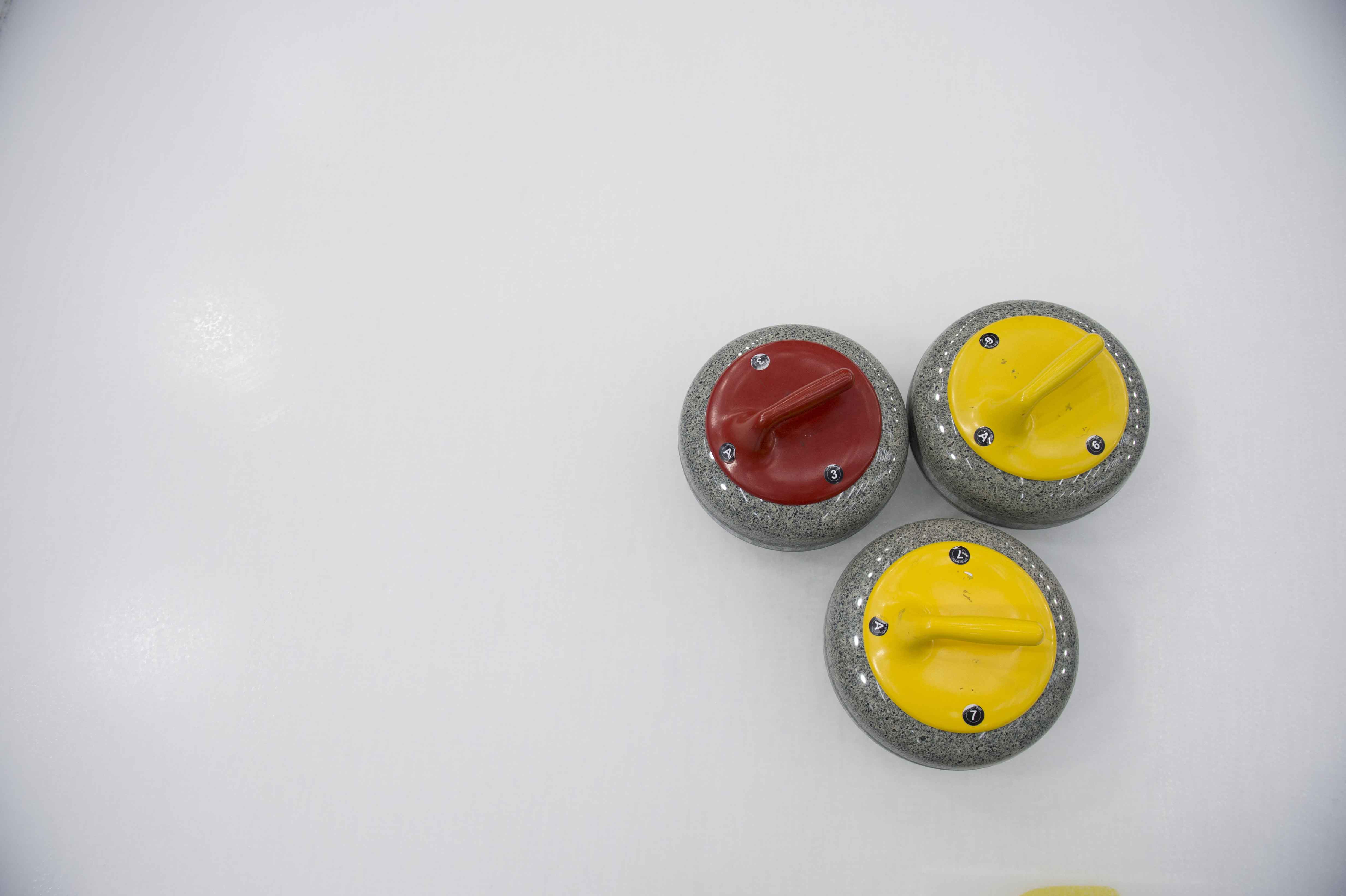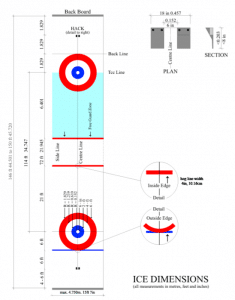
Curling Sheet: The Playing Surface
The playing surface
The playing surface or curling sheet is a rectangular area of ice, carefully prepared to be as flat and level as possible, 146 to 150 feet in length by 14.2 to 15.7 feet in width. The shorter borders of the sheet are called the backboards. Because of the elongated shape, several sheets may be laid out side by side in the same arena, allowing multiple games to be played simultaneously.
A target, the house, is marked at each end of the sheet. The house consists of three concentric rings formed by painting or laying coloured vinyl sheet under the ice and are usually distinguished by colour. These rings are defined by their diameters as the four-foot, eight-foot and 12-foot rings. The rings are merely a visual aid for aiming and judging which stone is closer to the centre; they do not affect scoring but a stone must at least touch the outer ring or it does not score.
Each house is centred on the intersection of the centre line, drawn one-half inch in width the length of the sheet through the centre of the tee lines. These lines divide the houses into quarters.
The centre of each house, at the intersection of the centre line and the tee line, is known as the button. Two hog lines are drawn 21 feet from the centre of the tee line.
The hacks are fixed behind each button; a hack gives the thrower something to push against when making the throw. On indoor rinks, there are usually two fixed hacks, rubber-lined holes, one on each side of the centre line. A single moveable hack may also be used.
The ice may be natural but is usually frozen by a refrigeration plant pumping a brine solution through numerous pipes fixed lengthwise at the bottom of a shallow pan of water. Most curling clubs have an ice maker whose main job is to care for the ice. At the major curling championships, ice maintenance is extremely important. Large events, such as the Tim Hortons Brier or other national/international championships, are typically held in an arena that presents a challenge to the ice maker, who must constantly monitor and adjust the ice and air temperatures as well as air humidity levels to ensure a consistent playing surface. It is common for each sheet of ice to have multiple sensors embedded in order to monitor surface temperature, as well as probes set up in the seating area (to monitor humidity) and in the compressor room (to monitor brine supply and return temperatures).
A key part of the preparation of the playing surface is the spraying of water droplets onto the ice, which form pebble on freezing. As the stone moves over the pebble, any rotation of the stone causes it to curl to the inside or outside. The amount of curl (commonly referred to as the feet of curl) can change during a game as the pebble wears; the ice maker must monitor this and be prepared to scrape and re-pebble the surface prior to each game.



